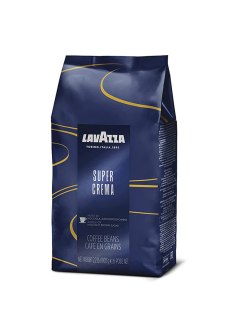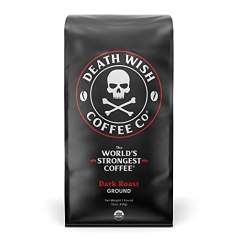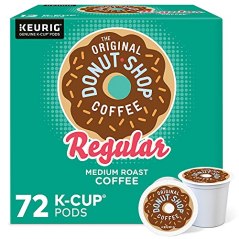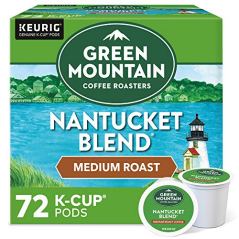Buying guide for Best coffee
Whether you call it joe, java, cuppa, liquid energy, or brew, if you are part of the 62% of Americans who drink coffee on a daily basis, that first morning cup sets the tone for the rest of your day. A good cup of coffee is a thing of beauty – hot but not scalding, slightly bitter without pucker, and wafting an aroma that draws even the deepest sleeper from his bed.
And while you could certainly buy an expensive cup of coffee on your way to work, it’s far more economical – and often, far tastier – to brew your own. But how do you know which beans make for the best cup of brew? Should you buy whole beans or pre-ground coffee? What’s the difference between robusta and arabica? And does the degree of roasting affect the flavor?
All of these questions are enough enough to make you want to reach for … well, a cup of coffee. Luckily, we’ve performed the coffee research for you. We reviewed the best advice from top experts as well as feedback from coffee drinkers in general.
It all starts with a bean
All coffee is brewed from the “bean” – it’s actually the pit or the stone – of the coffea plant’s cherry. Two common species of coffee plants are valued for their beans: Coffea arabica, which produces the arabica bean, and Coffea canephora, which produces the robusta bean.
Arabica beans
In general, arabica beans make the best cup of coffee. They are more expensive, however, as the Coffea arabica plant is hard to grow and susceptible to pests and disease. What’s more, it needs several years to mature before it will produce cherries. Most arabica beans are grown in South America, particularly Brazil and Colombia, but Africa also produces crops of these valuable beans.
"Arabica beans are the most popular type of coffee bean, and they account for approximately 60% of the world’s coffee bean supply. Most of the remaining 40% are robusta beans."
STAFF
BestReviews
Robusta beans
Africa and Indonesia grow the world’s supply of robusta beans. These harsher and more caffeinated coffee beans cost less than arabica beans, as the Coffea canephora plant is hardier than the arabica bush and produces far more cherries at a younger age. Supermarket brands, instant coffee, and inexpensive coffee is almost always ground from this type of bean.
In terms of flavor, arabica beans win the prize. They brew a more delicate cup of coffee with slight overtones of berry and a high level of acidity. Robustas have a lot more caffeine – nearly twice as much as arabica beans – but they also have a stronger, more bitter taste that can be a bit harsh. Still, there are high-quality robustas available, and these beans do make a good cup of espresso.
Coffee requires different grind sizes for different brewing methods. As such, we look at various pre-ground coffees to find the right fit for every brewing device.
In our quest to find the best coffee, we look at both pre-ground coffee and whole bean coffee.
Grinding your own coffee beans lets you tailor your grind size to your brewing method. We look at different whole bean coffees to find the most versatile choices.
Our researchers look for coffees that make great hot drip as well as homemade cold brew.
We know our readers have a wide variety of tastes, so our team compares different coffees to find the very best.
We compare dark roast and light roast coffees, noting the qualities of each so our readers can choose between bold and mild flavor profiles.
Capsule coffee makers have become popular for coffee drinkers on the go. We consider pods and capsules in addition to fresh beans and ground coffee.
We keep price in mind when looking at the top coffee products, thinking about which products would appeal to various consumers.
Fair Trade coffee is produced in adherence to certain ethical practices. We take note of Fair Trade-certified coffee products in our research.
We love the convenience of capsule-style coffeemakers, so we compare different varieties to find the pods with the most well-balanced flavors.
Where in the world is your coffee from?
Coffee is grown in several places around the world. All of these locations share proximity to the equator, a cool-to-moderate tropical climate, rich soil, and, in the case of arabica beans, a high altitude. And while you might assume that a coffee bean from Brazil is really no different from a coffee bean from Kenya, there actually are subtle taste differences depending on where the beans were grown.
South American coffee beans are generally a little sweeter, more acidic, and better balanced than beans from other parts of the world. These beans taste best with a light to medium roast.
Coffee beans from Africa and the Middle East have a denser body and mouthfeel, moderate acidity, and a range of flavor overtones that lean toward spicy or fruity. A medium to dark roast is best for these beans.
Indonesian, Asian, and Pacific Island coffee beans are low in acidity, heavy in body, and earthy in taste. A dark roast brings out the full flavor of beans from these parts of the world.
Did you know?
The higher the elevation at which the beans were grown, the smoother and richer the coffee will taste. Some brands specify the elevation on the packaging.
STAFF
BestReviews
What about roast?
Coffee beans require roasting before they can be brewed. Some coffee purists prefer to buy raw beans and do their own roasting, but most people buy pre-roasted beans. While different coffee growers and roasters have their own cutoff points for each level of roast, in general, you can use the following guidelines.
Lightly roasted beans are low in acidity, somewhat bitter and muted in flavor, and lower in fullness. You’ll generally find the highest levels of caffeine in these beans.
Medium roast beans are more flavorful, and you can usually taste the bean’s aromatics, such as floral, berry, or earthy. This is the most common roast for American coffee.
Medium-dark roast leads to rich, dark flavor. You’ll often see a bit of oil on the surface of the coffee. The acidity of the brew is lower, but you may notice a bittersweet aftertaste.
Dark roasts have a full body, bitter taste, and little acidity. Note that a dark roast doesn’t necessarily mean stronger coffee; that depends mostly on how you brew it.
Whole-bean coffee vs. ground coffee
If you are a coffee purist, there’s no argument; buying whole beans and grinding them yourself is the way to go. You’ll get the freshest cup of coffee this way; once ground, coffee beans start to oxidize, reducing and altering the flavor. Grinding your own beans also lets you tailor the grind to your preferred coffee-making method. For espresso, you'll want a fine grind, but if you're brewing in a French press or making cold brew, you need a more coarse grind. You’ll need a coffee grinder to do your own grinding, however.
If you are all about convenience and aren’t picky, go ahead and buy your beans already ground. Do look for the freshest beans, however; you’ll find a big difference between beans just ground a day or two ago and ground beans that have been sitting on the supermarket shelf for months.
Coffee prices
The price of coffee depends on quite a few things, including the brand, roast, variety, and whether or not it has been ground. While you can buy a can of ground coffee at the supermarket for $6 or so, better brands of coffee tend to cost anywhere from $9 to $20 per 12-ounce package.
Tips
Once you’ve narrowed down your favorite bean or blend, proper storage will keep it tasting its best.
Buying in bulk is good for many things, but not coffee beans. As a general rule, only buy as much coffee as you will consume in one week.
Coffee beans need to “rest” for a few days after being roasted. This allows carbon dioxide, which can alter the flavor, to escape. But beyond that, the fresher, the better. Always check the roast date before buying. Preferably, your beans were roasted no more than two weeks earlier, and one week is even better.
If your coffee beans come in a paper bag, transfer them to an airtight jar made of ceramic or another opaque material.
Store your coffee in a cool, dry pantry. Too much heat or light will quickly spoil the taste.
Coffee beans that look excessively oily were likely over-roasted. The result is coffee with a burnt flavor; avoid this if possible.
Grind beans right before brewing, and only grind the amount of coffee you plan to use that day.
FAQ
Q. How is the caffeine removed from decaf coffee?
A. Caffeine is mostly stored in the outer layer of the coffee bean. To remove caffeine, raw beans are steamed and the outer layers scraped away. The beans are dried before they are roasted.
Caffeine removal does affect coffee flavor, which is why decaf coffee can taste slightly flat. Bear in mind that “decaffeinated” coffee doesn’t necessarily have zero caffeine in it. As a general rule, decaf coffee has around 10% of the caffeine found in regular coffee.
Q. What does Fair Trade Certified mean?
A. “Fair Trade Certified” means the farmers were paid a fair wage, no forced or child labor was involved in the growing or picking of the beans, the use of pesticides and other harmful chemicals was limited, and the coffee plantation practiced sustainable farming methods. You’ll find many brands of coffee certified as Fair Trade, particularly specialty brands. The Fair Trade Certified program is an international program run by TransFair USA.
Q. Is it really worth paying more for specialty coffee brands?
A. While there’s no need to break your budget for a good cup of joe, premium brands of coffee truly do produce a premium-tasting brew. Specialty coffee growers and sellers generally start with beans of higher-than-average quality. They use the best methods for roasting, they package the beans quickly after roasting them, and they offer a wider variety of bean types, flavored coffees, and specialty blends.
Q. Is instant coffee really coffee?
A. While instant coffee does start off as regular brewed coffee, it goes through a process – either freeze-drying or spray-drying – to remove all liquid from the beverage, leaving behind just the powdery remains. While instant coffee is convenient, it’s generally made from inferior-quality beans, and the drying process tends to leave the coffee with a bitter taste.




















































